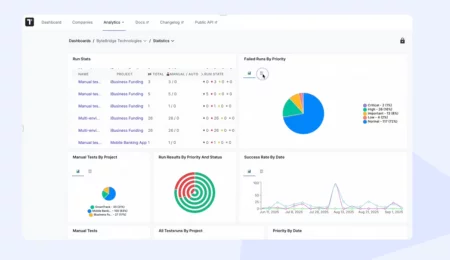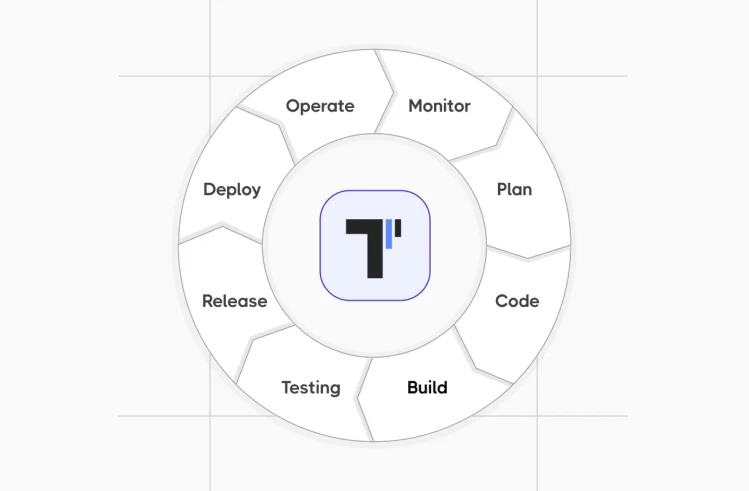Manual testing is the process of manually checking software for bugs, inconsistencies, and user experience issues. Instead of relying on automation tools, human testers simulate user interactions with a product to verify that it works as expected. It’s the oldest and most fundamental form of software testing, forming the basis of all Quality Assurance (QA) activities.
In the Software Development Life Cycle (SDLC), manual testing plays a critical role in validating business logic, design flow, usability, and performance before the product reaches users. While automation testing has become increasingly popular, manual testing remains essential in areas where human intuition, flexibility, and context are required.
Why Manual Testing Still Matters
Despite the rise of test automation and the fact that manual testing is the most time-consuming activity within a testing cycle according to recent software testing statistics, 35% of companies identify it as their most resource-intensive testing activity. Manual testing is still very much relevant since this investment of time and human resources pays dividends in software quality and user satisfaction.
1️⃣ Human Intuition VS Automation
Automated tools follow predefined scripts, unless they use AI. They can not anticipate unexpected user behavior or detect subtle design flaws. Human testers can apply empathy, common sense, and critical thinking, all key to evaluating user expectations and user satisfaction.
2️⃣ Usability & Exploratory Testing
During exploratory testing, testers navigate the software freely without predefined scripts. This helps uncover hidden bugs and usability issues that structured testing might miss. It’s especially useful in early development stages when documentation is limited or evolving.
Exploratory testing, a key type of testing performed manually, allows testers to investigate software applications without predefined test scripts. This testing approach encourages testers to use their creativity and domain expertise to discover edge cases and unexpected behaviors that scripted tests might overlook.
3️⃣ Edge Cases That Automation May Miss
Many edge cases, like odd screen resolutions, specific input combinations, or unusual user flows, are too complex or infrequent to automate. Manual testing ensures comprehensive coverage of these irregular scenarios.
4️⃣ Early-Stage Product Testing
When a product is still in the concept or prototype phase, test cases evolve rapidly. Manual testing is more adaptable in such fluid environments compared to rigid automation scripts.
5️⃣ Compliance, Accessibility, and Visual Validation
Testing for accessibility standards, compliance with legal requirements, and visual/UI validation often requires a human touch. Screen readers, color contrast, font legibility, and user interface alignment can’t be reliably assessed by machines alone.
Key Components of Manual Testing
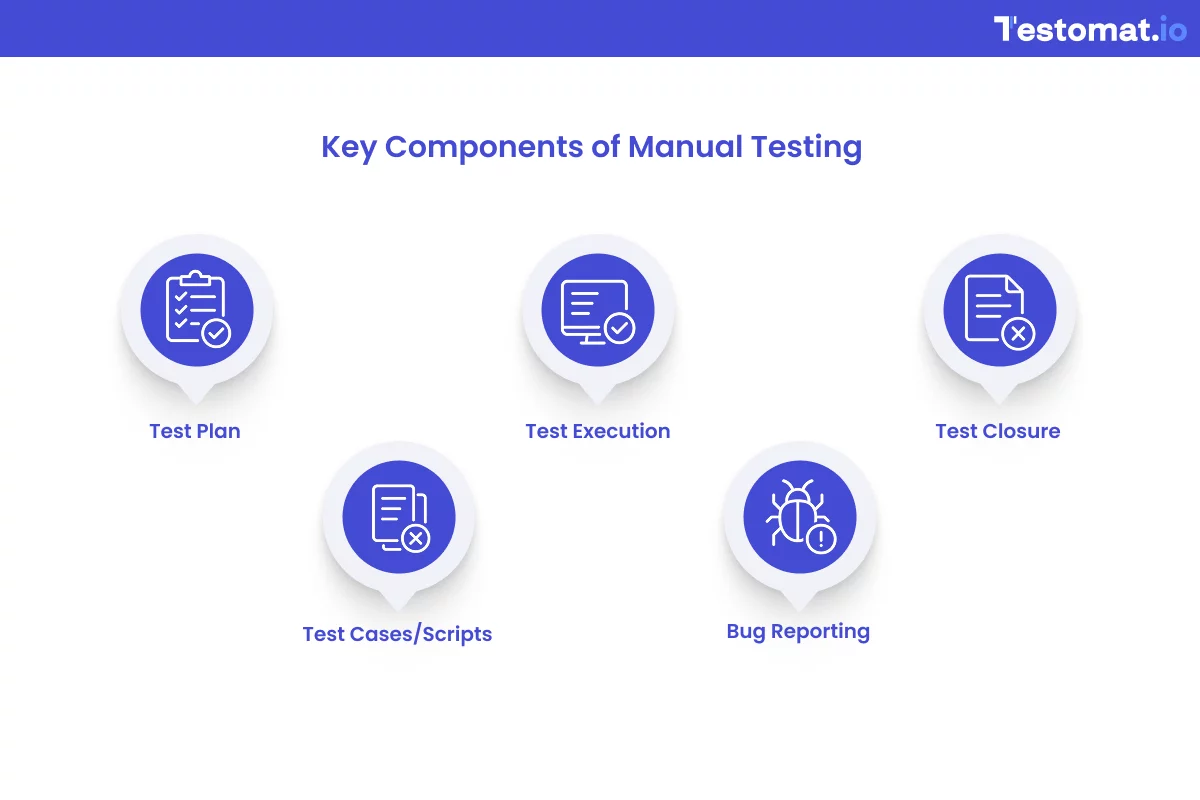
Test Plan
A test plan is a high-level document that outlines the testing approach, scope, resources, timeline, and deliverables. It is a roadmap that guides testers and aligns them with the broader goals of the development team.
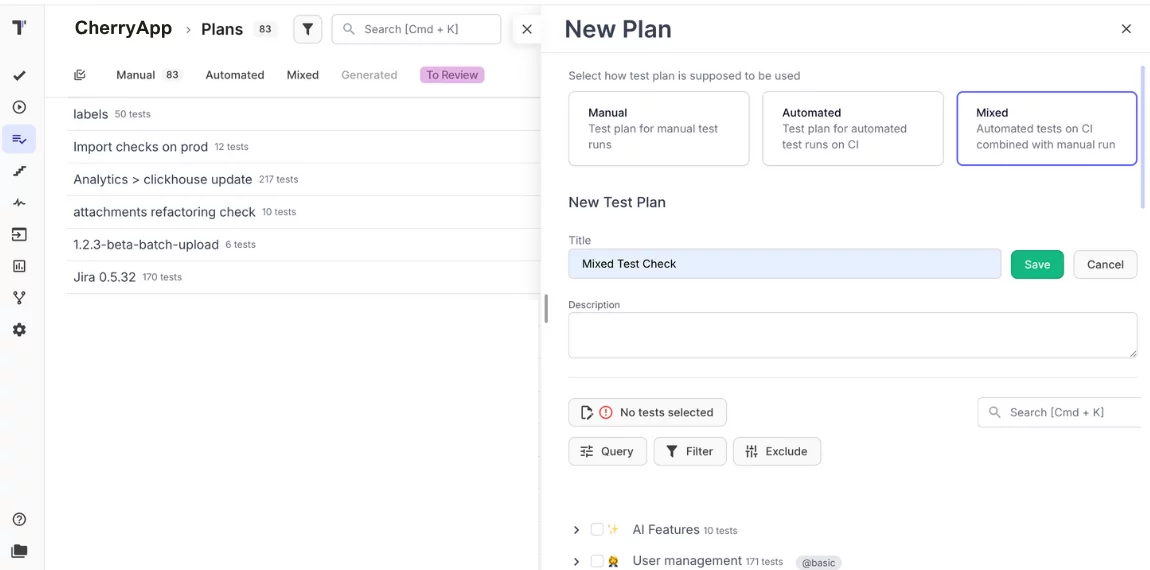
The test plan coordinates testing activities across the development team and provides stakeholders with visibility into testing efforts. It typically includes risk assessment, resource allocation, and contingency plans for various scenarios that might arise during test execution.
Test Case
A test case is a set of actions, inputs, and expected results designed to validate a specific function. A well-written test case includes:
- Test ID
- Title/Objective
- Steps to reproduce
- Expected results
- Actual results
- Pass/Fail status
Effective test cases are clear, concise, and reusable across different testing cycles. They should be designed to verify specific functionality while being maintainable as the software evolves through the development process.
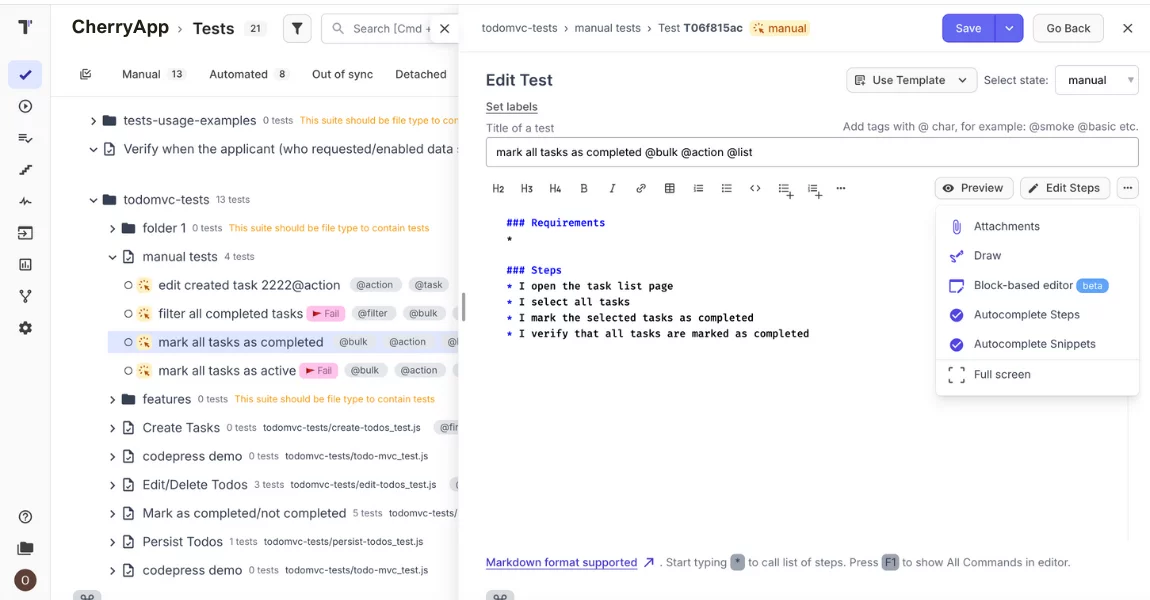
Test Scenario vs. Test Case
While often confused, test scenarios and test cases serve different purposes in the testing process.
- Test Scenario: A high-level description of a feature or functionality to be tested.
- Test Case: A detailed checklist of steps to validate the scenario.

Scenarios help testers understand what to test; cases define how to test it.

Manual Test Execution
Manual test execution is the phase where testers manually run each test case step-by-step without using automation tools. It involves simulating real user actions, like clicking buttons, entering data, or navigating pages to verify that the software behaves as expected.
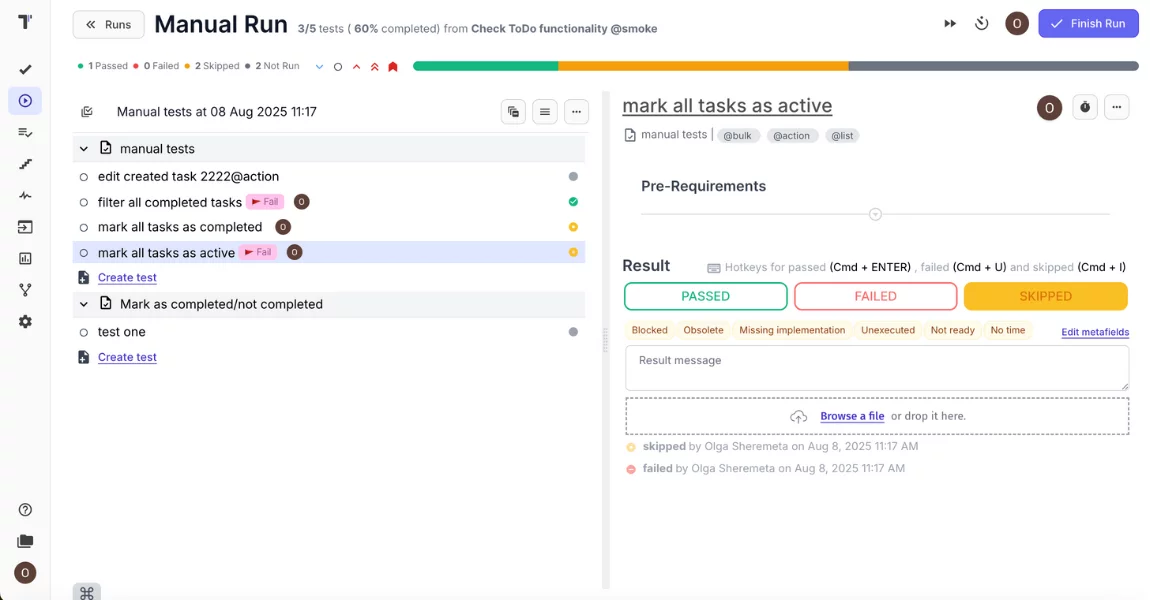
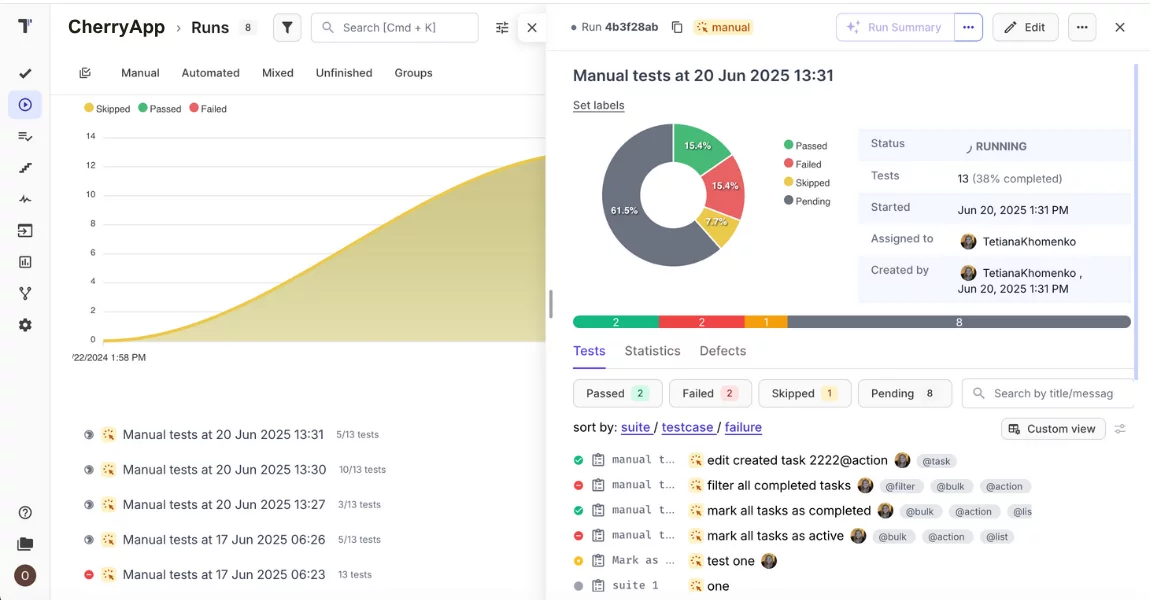
Bug Report
A clear bug report should contain:
- Summary
- Steps to reproduce
- Expected vs. actual result
- Screenshots or videos
- Severity and priority
- Environment details
Good reporting accelerates bug resolution and fosters collaboration across teams.
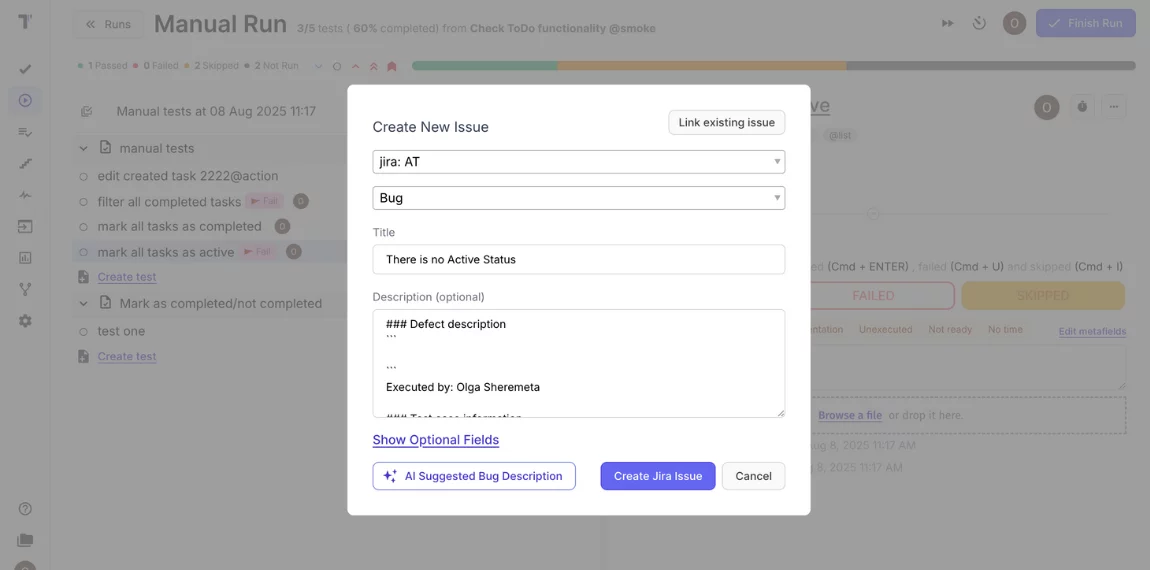
Test Closure
A test environment replicates the production environment where the software will run. It includes:
- Operating systems
- Browsers/devices
- Databases
- Network conditions
Testing on real devices in a well-configured environment ensures reliability.
Step-by-Step: Manual Testing Process
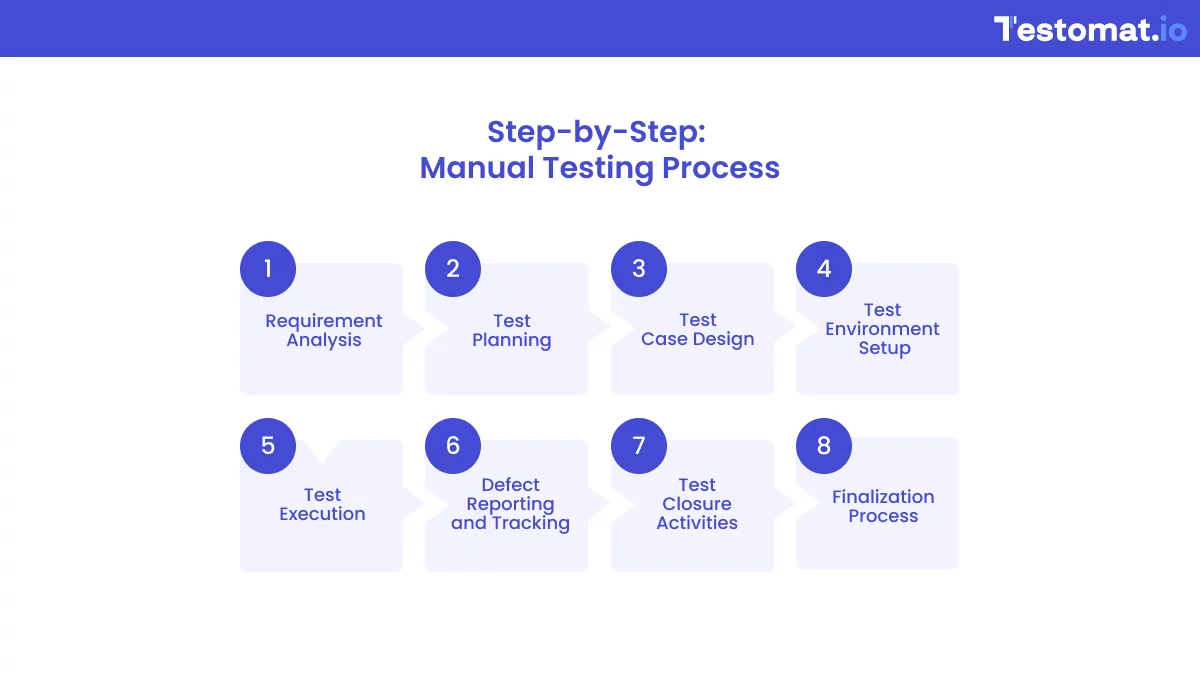
Manual testing follows a structured yet flexible flow.
1️⃣ Requirement Analysis
The manual testing process begins with thorough requirement analysis, where testers review functional specifications, user stories, and acceptance criteria to understand what needs to be tested. This phase involves identifying testable requirements, clarifying ambiguities with stakeholders, and understanding the expected behavior of the software application.
During requirement analysis, testers also identify potential risks, dependencies, and constraints that might impact the testing approach. This analysis forms the foundation for all subsequent testing activities and helps ensure that testing efforts align with business objectives.
2️⃣ Test Planning
Test planning involves creating a comprehensive strategy for the testing effort, including defining the testing scope, approach, resources, and timeline. This phase results in a detailed test plan that guides the entire testing process and ensures that all stakeholders understand their roles and responsibilities.
Effective test planning considers various factors such as project constraints, available resources, risk levels, and quality objectives. The plan should be detailed enough to provide clear guidance while remaining flexible enough to adapt to changing requirements.
3️⃣ Test Case Design
Test case design transforms requirements and test scenarios into executable test procedures. This phase involves creating detailed test cases that cover both positive and negative scenarios, edge cases, and boundary conditions. Test case design requires careful consideration of test data requirements, expected results, and traceability to requirements.

Well-designed test cases should provide comprehensive coverage while remaining maintainable and efficient to execute. The design process often involves peer reviews to ensure quality and completeness of the test cases.
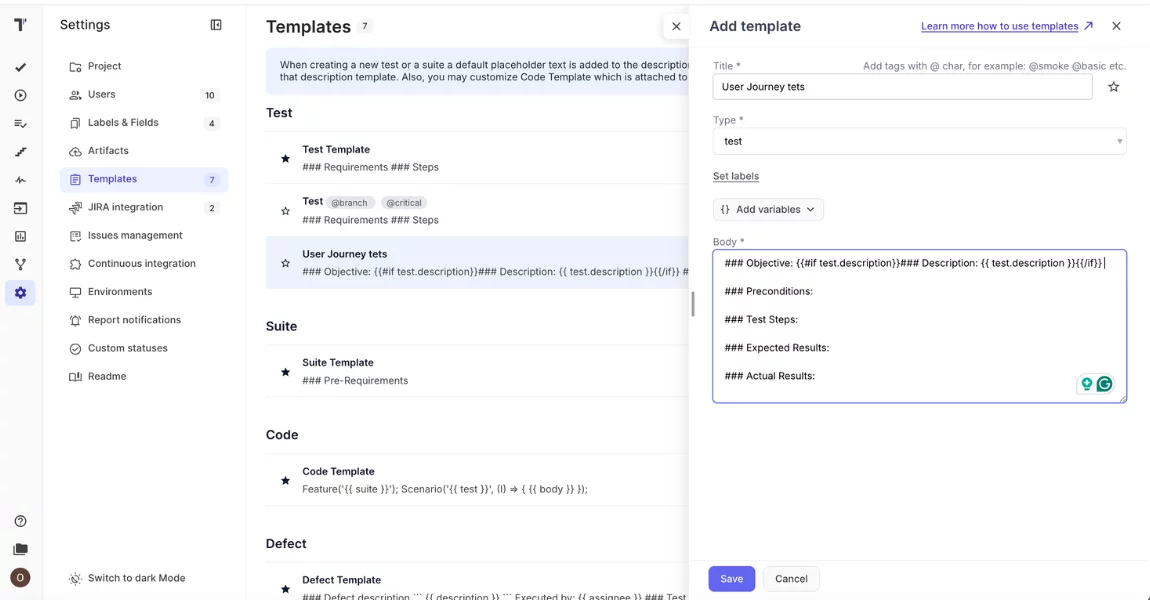
4️⃣ Test Environment Setup
Setting up the test environment involves configuring all necessary infrastructure, installing required software, preparing test data, and ensuring that the environment closely resembles the production setting. This phase is critical for obtaining reliable and meaningful test results.
Environment setup also includes establishing processes for environment maintenance, data refresh, and configuration management. Proper environment management helps prevent testing delays and ensures consistent test execution.

5️⃣ Test Execution
Test execution is where testers actually run the test cases, compare actual results with expected outcomes, and document any deviations or defects. This phase requires careful attention to detail and systematic documentation of all testing activities.
During test execution, testers may also perform ad-hoc testing and exploratory testing to investigate areas not covered by formal test cases. This combination of structured and unstructured testing helps maximize defect detection.
6️⃣ Defect Reporting and Tracking
When defects are discovered during test execution, they must be documented, classified, and tracked through to resolution. This phase involves creating detailed bug reports, working with developers to clarify issues, and verifying fixes when they become available.
Effective defect management includes categorizing bugs by severity and priority, tracking resolution progress, and maintaining metrics on defect trends and resolution times.
7️⃣ Test Closure Activities
Test closure involves completing final documentation, analyzing testing metrics, conducting lessons learned sessions, and archiving test artifacts. This phase ensures that testing knowledge is preserved and that insights from the current project can inform future testing efforts.
Test closure activities also include final reporting to stakeholders, confirming that exit criteria have been met, and transitioning any ongoing maintenance activities to appropriate teams.
What are The Main Manual Testing Types?
Manual testing covers various types of testing, including:
- Smoke Testing: Quick checks to ensure basic functionality.
- Sanity Testing: Verifying new functionality or bug fixes.
- Regression Testing: Ensuring code changes haven’t broken existing features.
- Exploratory Testing: Tester-driven, creative exploration.
- Ad-hoc Testing: Informal testing without documentation.
- Usability Testing: Assessing user experience and user interactions.
- User Acceptance Testing (UAT): Final checks by actual end users.
These types are essential for verifying software applications from multiple angles.
Manual vs Automated Testing: When to Use Each
The choice between manual and automated testing depends on various factors including project timeline, budget, application stability, and testing objectives. The adoption of test automation is accelerating, with 26% of teams replacing up to 50% of their manual testing efforts and 20% replacing 75% or more.
| Criteria | Manual Testing | Automated Testing |
| Best For | UI, exploratory, short-term | Repetitive, regression, load, performance |
| Speed | Slower | Faster |
| Human Insight | ✅ Yes | ❌ Limited |
| Cost | Lower up front | High setup, low long-term cost |
| Tools | Basic (Google Docs, Jira) | Advanced (Selenium, Cypress) |
| Scalability | Limited | High |
| Reusability | Low | High |
What are The Manual Testing Tools That You Should Know?
Even manual testers rely on tools to streamline the process:
- Test Case Management: Testomat.io, TestRail, TestLink
- Bug Tracking: Jira, Bugzilla
- Documentation: Confluence, Google Docs
- Screen Capture/Recording: Loom, Lightshot
- Spreadsheets & Checklists: Excel, Notion
These tools enhance collaboration, track progress, and improve test management.
Manual & Automation Test Synchronization
Modern QA practices combine both methods. For example:
- Start with manual testing in early phases
- Automate repetitive testing tasks later (like regression testing)
- Sync manual and automated test scripts in one platform (e.g., Testomat.io)
- Use manual results to refine automated test cases
This hybrid model ensures flexibility, scalability, and comprehensive coverage across all aspects of testing.
Challenges in Manual Testing
Manual testing isn’t without its pain points.
| Challenge | Description | How to Solve It |
| Time-Consuming | Manual execution slows down releases, especially for large apps or fast sprints | Prioritize critical test cases, use checklists, and introduce automation for repetitive workflows |
| Human Error | Missed steps, inconsistent reporting, or oversight due to fatigue | Follow standardized test case templates, use peer reviews, and leverage screen recording tools |
| Lack of Scalability | Hard to test across all devices, browsers, or configurations manually | Use cross-browser tools like BrowserStack or real device farms; selectively automate for scale |
| Tedious for Regression | Re-running the same tests after every build is repetitive and draining | Automate stable regression suites, and keep manual efforts focused on exploratory or UI validation |
| Delayed Feedback Loops | Bugs found late in the cycle cost more to fix | Involve testers early in the development cycle; apply shift-left testing practices |
| Limited Test Coverage | Manual testing may miss edge cases or deep logic paths | Combine manual efforts with white box and grey box testing, and collaborate closely with devs |
| Lack of Documentation | Unstructured test efforts make it hard to track or reproduce issues | Use test management tools (e.g., Testomat.io, TestRail) to maintain well-documented and reusable cases |
That’s why many organizations transition to a blended approach over time.
Best Practices for Manual Testers
If you’re just starting or looking to improve your testing approach, you can use these strategies. After all, a good manual tester is curious, methodical, and collaborative.
✍ Keep Test Cases Clear and Reusable
Clarity beats cleverness. Well-written test cases should be easy to follow, even for someone new to the project. Reusability reduces maintenance and makes each testing cycle more efficient.
Tip: Use plain language, avoid jargon, and focus on user behavior. Think like an end user.
📋 Use Checklists for Repetitive Tasks
For things like test environment setup or basic UI validation, checklists reduce mental load and human error. They’re your safety net — and they evolve as your app does.
Tip: Maintain checklists for app testing, integration testing, and performance testing workflows.
🤝 Collaborate With Developers and Designers
The closer QA is to the development team, the faster bugs are fixed — and the fewer misunderstandings happen. Collaboration leads to better alignment on user experience, design intent, and edge cases.
Tip: Attend sprint planning and design reviews to catch issues early and align on testing expectations.
🪲 Log Bugs Clearly With Repro Steps
A bug report should speak for itself. Vague or incomplete reports only delay fixes. Include reproduction steps, browser/device info, and screenshots or screen recordings when possible.
Tip: Use structured bug templates and emphasize test environment details and internal structure concerns (e.g., API responses or backend logs).
💻 Learn Basic Automation for Hybrid Roles
Even if you’re focused on manual QA, learning the basics of test automation makes you more flexible and future-ready. It also helps you write better test cases that support both manual and automated testing pipelines.
Tip: Start with tool like Cypress, and learn how automation tools complement manual techniques.
Conclusion
Manual testing is far from obsolete. It remains a cornerstone of software quality assurance, especially when human judgment, context, and creativity are needed. It allows teams to evaluate user experience, uncover subtle bugs, and validate features in real-world scenarios. As products evolve, combining manual and automation testing provides the best of both worlds.
Fortunately, now there is Testomat.io, which can help you manage automated and manual testing in one AI-powered workspace, connecting BA, Dev, QA, and every non-tech stakeholder into a single loop to boost quality and faster delivery speed with AI agents. Contact our team now to learn more about Testomat.io.
Frequently asked questions
Is manual testing outdated?

Not at all. While automation is great for speed and scalability, manual testing is essential for usability, exploratory testing, and early-stage product validation.
Can I be a tester without coding?

Yes. Many manual QA roles don’t require programming. However, learning basic scripting can help you transition into hybrid or automation QA roles over time.
How do I start a career in manual QA?

Start by learning the basics: test cases, test plans, and common types of testing. Practice on open-source projects or apps. Platforms like Testomat.io can help you manage your testing work professionally.
